History of Atlantic Packet Ships
Setting sail no matter what the condition, the Black Ball Line packet ships quickly became popular to businessmen and passengers alike, valued for their predictability. Other companies soon caught on to the revolutionary business venture, with scores of competing North Atlantic lines springing up in no time on the ports of New York.
13 Dec 21 · 10 mins read
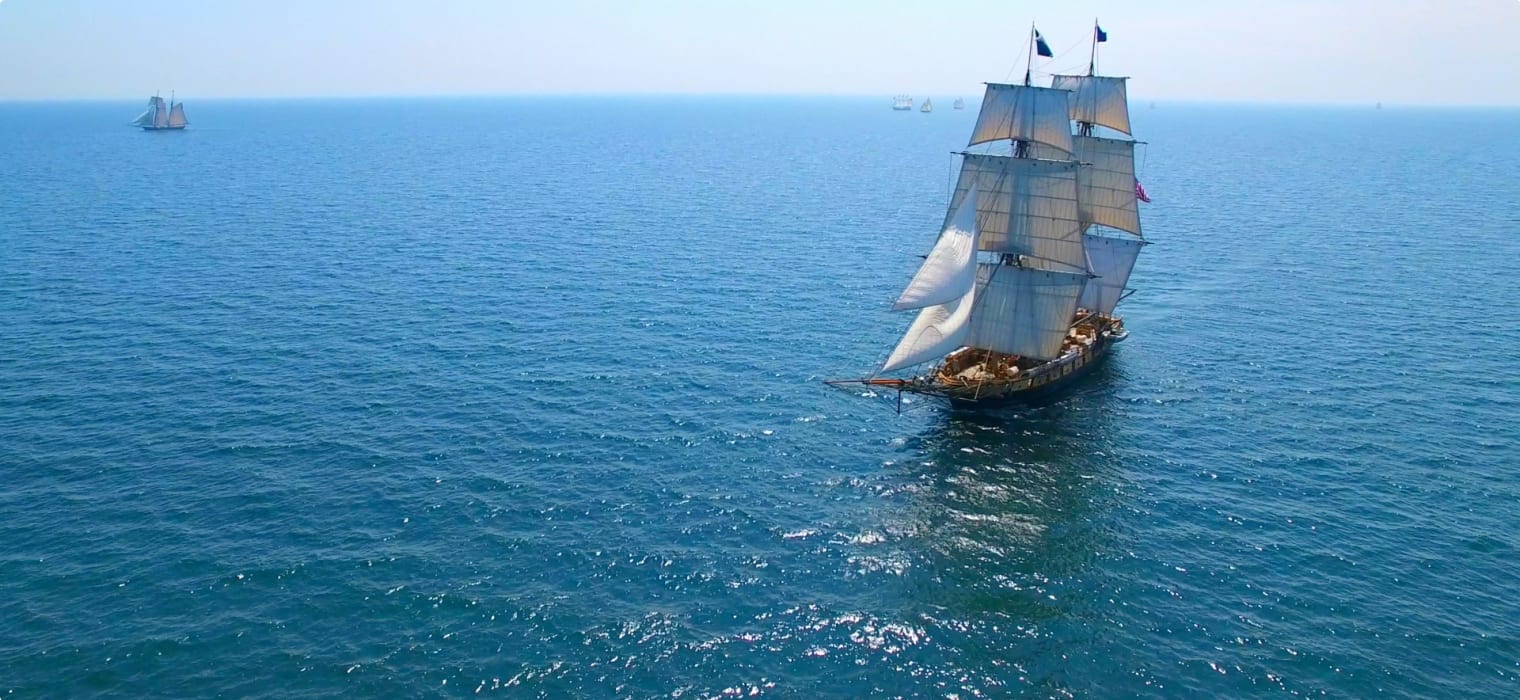
History of Atlantic Packet Ships
By Marco Stojanovik
On the cold morning of January 5, 1818, the first cargo-laden packet ship set sail eastbound from the ports of New York in the United States. The James Munroe, as it was called, belonged to the infamous Black Ball Line, the pioneer of transatlantic shipping. The British Post Office had already operated their own packet boat service for over 150 years, delivering mail across the Atlantic. The Black Ball Line, however, was the first to provide regular services for cargo and passengers as well – on speedy, fixed schedules.
Setting sail no matter what the condition, the Black Ball Line packet ships quickly became popular to businessmen and passengers alike, valued for their predictability. Other companies soon caught on to the revolutionary business venture, with scores of competing North Atlantic lines springing up in no time on the ports of New York. Although the sailboats were eventually phased out, replaced by steamers and then diesel engines, the form of shipping has continued ever since to dominate the Atlantic and other oceans.
Read on for a detailed history of these ships, intended as background reading for Odyssey Traveller’s tours for mature and senior travellers. Much of the information for this article is sourced from Simon Winchester’s Atlantic: A Vast Ocean of a Million Stories.

Before the Packet Ships
Prior to the use of Packet Ships, many ships already carried immense tonnages of cargoes across the Atlantic between the New and Old Worlds. Cotton, sugar, coffee, and tobacco travelled from the various plantations of the Americas, Brazil, and the Caribbean islands to Europe. And in return, Europe sent back the trade goods and construction supplies and items of up-to-date technology and fashion that the merchants of the American colonies demanded.
But these so-called tramp ships sailed on their own schedule, with no regular or reliable departure or arrival times. Ships would have to wait until their holds were full until they were able to depart, sometimes languishing for weeks in harbour until an adequate cargo had been assembled. Nor was there any certainty about the routes a vessel might take. A last-minute addition of freight bound for a new port meant the ship had to divert from its original course to ensure it made the delivery.
Mail service between England and the American colonies was in the same way extremely irregular and limited. Ship captains heading across the Atlantic would often carry mail as a favour and for a small free. This type of mail was known as ‘ship letters’.
More regular ships did also operate, specializing in carrying one type of cargo. However, again they did not leave ports until all their cargo was ready, meaning schedules remained wildly unpredictable. For anyone or anything with a schedule to meet, especially passengers and mail, this was less than ideal.
British Post Office Packet Service
The one transatlantic shipping service to have a schedule, and even attempt to keep it, was organized by the British Post Office. It had been recognized very early on that important foreign mail to and from British embassies, colonies, and outposts, as well as leading citizens in faraway places needed to be accommodated.
Regular international services first ran from 1660 from Harwich to Holland (a major international trade partner for Great Britain). By the 1680s, routes also included Dover to Calais (in France) and Falmouth to Spain, Portugal, and then through the Strait of Gibraltar for onward transmission to the rest of south and central Europe and Asia. Falmouth was selected as the Packet Service station due to its deep harbour to fit large ships, protected on each side by fortified castles.
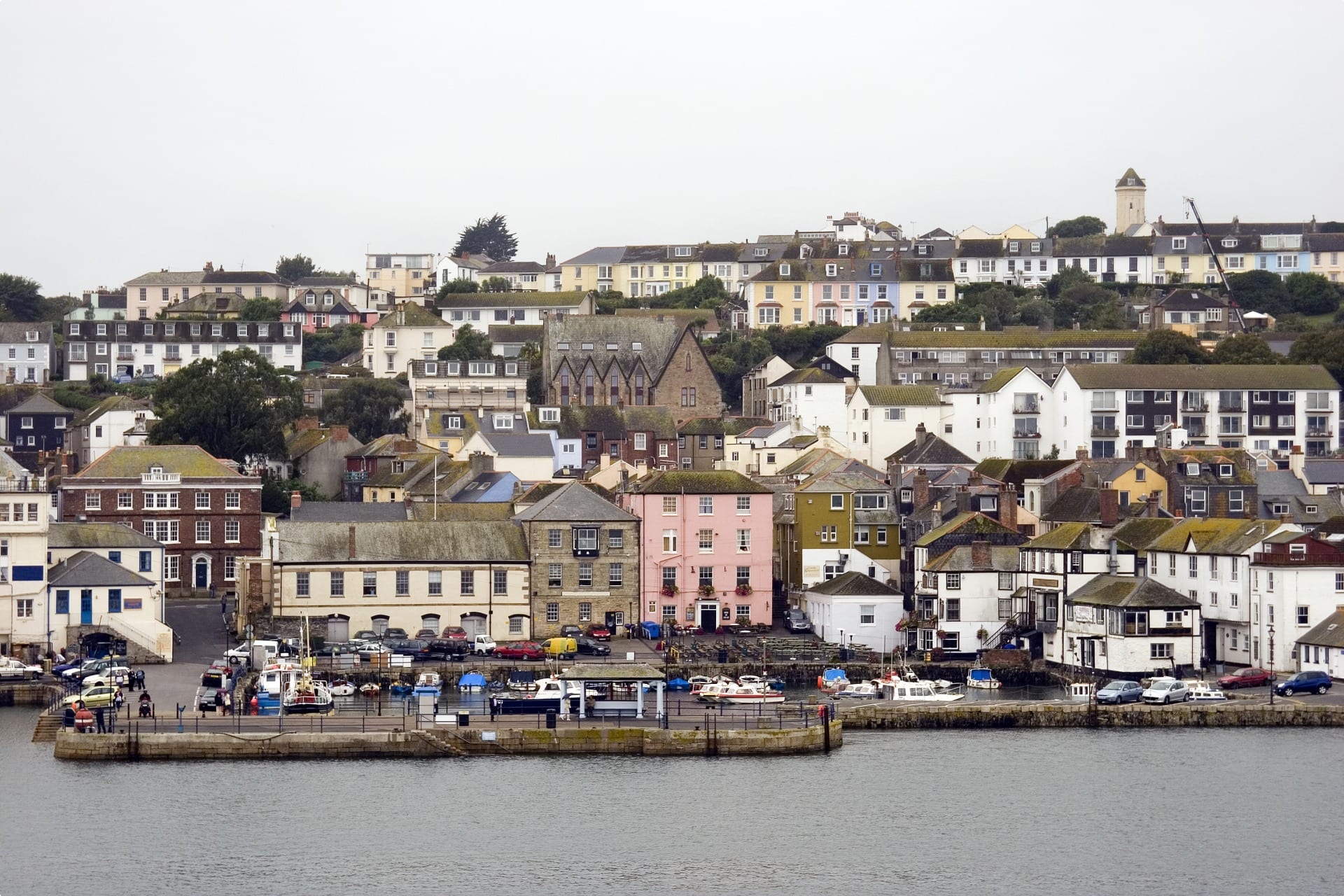
The Post Office’s first transatlantic service followed at the turn of the century. At this point the West Indies was more important to the British than the American colonies. So, from 1702, four ships began travelling regularly between Falmouth and the British-run sugar islands of Barbados, Antigua, Montserrat, Nevis, and Jamaica. We pass along this coastline on the Devon and Cornwall small group tour.
From here, it was only a short step to start running a service to the American mainland. The initial service, inaugurated in 1755, ran between Falmouth and New York City. By 1764, the routes had been extended to such southern ports as Pensacola, St. Augustine, Savannah, Charleston, as well as northeast to the important American garrison city of Halifax.
Travelling by sea during this time was dangerous. Britain was continuously at war in the 18th and 19th centuries and the ships were frequently attacked by enemy warships and privateers. The attacks occurred so often that the government offered official compensation rates for death and injury, including £8 for a sailor’s arm or leg and £4 for an eye. The American War of Independence also unsurprisingly created logistical difficulties for the services.
Once the war was over though, a formal and regular service was put into operation. By 1788 both Halifax and New York were receiving regular mails from Falmouth.
The routine soon became familiar amongst Londoners. On the first Wednesday of every month, mails would be made up at the General Post office in central London in New York, Halifax, and Quebec City. The collected mail would then be held in leather packets – from which the boats get their name – and transported via post coach to Falmouth. They would arrive here on Sunday evening and transferred to the waiting boat, which promptly made its way out into the Atlantic. On average, it took 50 days to make it across the ocean.
It wasn’t only mail that could be sent on the packet boats. Newspapers, magazines, bullion, private goods, and money from merchants could also be transported. And there were a few cabins for paying passengers. Cargo, however, was not permitted aboard these ships.
Black Ball Line Cargo Shipping
It wasn’t until 1818 that the notion of sending regularly scheduled packets of mail was extended to the shipping of general cargoes. The brains behind the venture were two Britons, living in America, working as textile importers. Jeremiah Thompson and Benjamin Marshall both wanted to buy raw cotton direct from the plantation markets in the southern American states. By coincidence they occupied offices next door to each other on Beekman Street in lower Manhattan; and because they each had different plans for the cotton, they decided to work together.
The two men set up offices in Atlanta, working with agents in New Orleans. With no pre-existing internal freight system, they used their own small vessels to ship cotton from the south-eastern ports up to New York. Then they used whatever vessels happened to be available to ship the cotton on across the Atlantic to Liverpool.
This is where Marshall and Thompson saw a tremendous business opportunity. For there were simply not enough ships leaving New York that offered cargo space across the ocean, and the ships that did leave did so on unreliable schedules. What if they could establish a transatlantic ship line, with several vessels under coordinated private management sailing on a regular schedule between established ports?
As it was custom for merchants to own their own ships, Marshall and Thompson already owned three vessels – the Pacific, the Amity, and the Courier – which they used in their Atlantic cotton-shipping trade. Along with another Quaker shipowner, Isaac Wright, they then had the genius idea to order still more ships, and to offer the space in these ships’ holds to any shipper who needed it.
Crucially, these ships would set out across the ocean on a fixed and regular timetable. A vessel would depart from New York at 10 a.m. on the first of every month bound for Liverpool. Meanwhile, on the first of ever month, a westbound ship would leave Liverpool. They would stick to this schedule, whether the ships were fully loaded or not.
They ships would carry freight of any kind, either in the hold or lashed to the decks, for any person who would pay. They would also carry up to twenty-eight passengers in some far degree of comfort.
Thus was founded the Back Ball Line. And in respect to the original British Post Office Service, they named their vessels and their service the same name – packet ships.
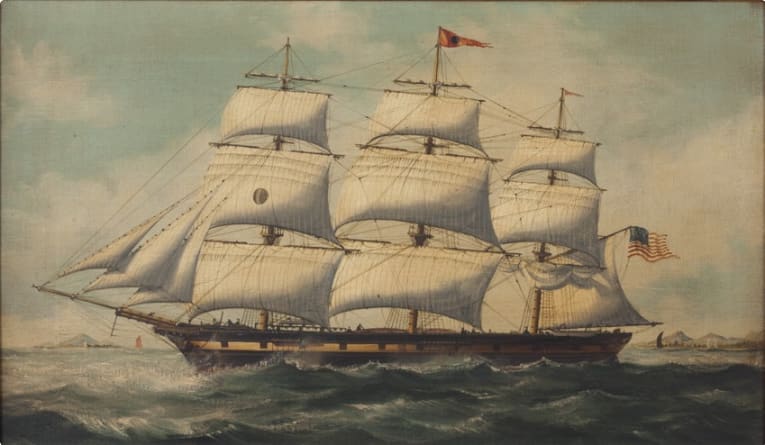
First Departures
The first-ever Black Ball Line packet ship left Pier 23 in lower New York on the cold, windy morning of January 5, 1818. Named for the newly elected president, the James Monroe – the 424-ton, three-masted ship – set sail into a howling north-easterly snowstorm, cheered on by mobs of fascinated onlookers. As promised, the service was not to be dependent on the whim of weather; it would stick to its schedule.
For identification, the James Munroe displayed her new signature logo, a large black ball, woven in the canvas of her fore topsail and on the pennant flying from her mainmast.
The hold space for her freight was generous, with enough room for 3,500 barrels of cargo. The first voyage was nowhere full though. Although its cargo consisted of apples, flour, wool, cranberries, turpentine and hops, her holds were still about a quarter empty. There were also ducks, hens, and a cow onboard to provide meat, fresh eggs and milk to the nervous clutch of civilian passengers.
For the most part, the passengers travelled in comfort. The ship was lavishly arranged, with staterooms and common dining areas accessible to first-class passengers. While whale-oil lanterns and silver service supplemented the luxurious experience.
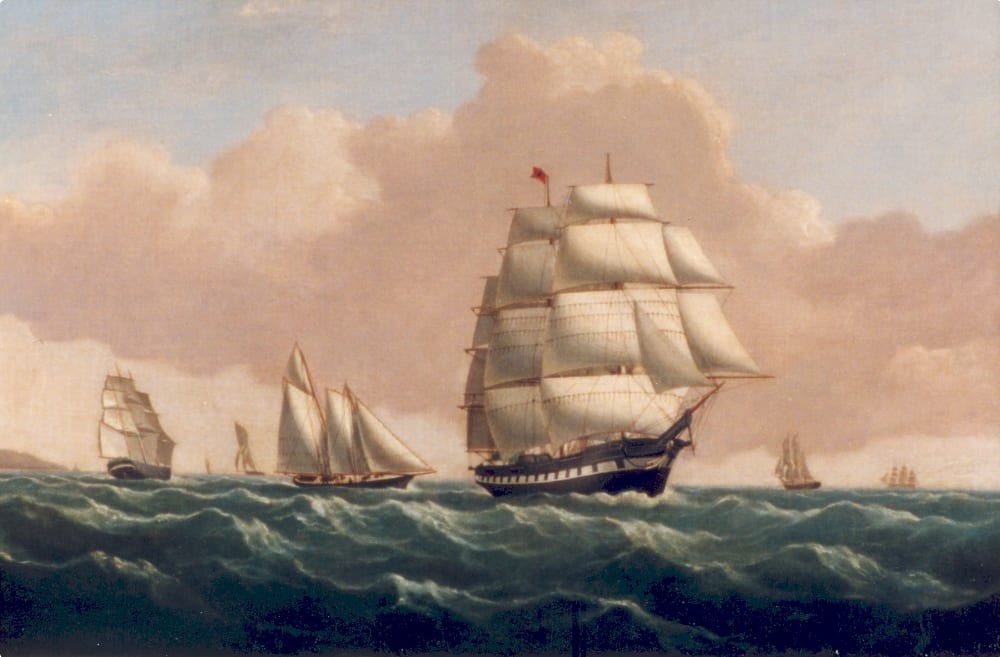
The James Munroe’s speed, along with the fixed schedule, were the main attractions for the customers. It took the ship’s captain, James Watkinson, 28 days to arrive at Liverpool, typing up on February 2. This was a very respectable time for the season compared to the majority of other ships sailing at the same time.
Somewhere in mid-ocean, the James Munroe had passed her sister ship, the Courier, heading in the other direction to New York from Liverpool. Battling against winter gales, she was less successful, taking 6 weeks in her journey and suffering badly.
The James Monroe‘s return was even less convincing. Damaged by a terrific storm in the Irish Sea, she was forced to return to Liverpool for repairs. In all, the return trip to New York took a slow forty-eight days.
Expansion
Despite the slow return times of the initial journeys, the three Quakers, Marshall, Thompson, and Wright, kept their nerve. By 1820 all four of their vessels were running regularly and on schedule across the ocean, without major incident. Overtime the cargoes steadily increased, with shippers willing to pay higher rates for the guaranteed service.
Two years later the men could afford to build even bigger vessels, some registering 500 tons. The Albion, the Britannia, the Canada, and the Columbia joined the original four ships on line, and were soon all reputed for their speed and reliability. Their crews and captains themselves were regarded widely to be the best on the ocean, sailing under even the most dire conditions. With the new ships, the line increased sailings to two per month, leaving New York for Liverpool on the first and sixteenth of every month.
Before long, scores of competing Atlantic lines were established in New York and other major East Coast ports, including Philadelphia and Boston. New York remained the centre of the packet service though. At any one time as many as five hundred sailing vessels might be crammed side by side along the Manhattan waterfront.
The Red Star Line was inaugurated here in 1921, followed by the Blue Swallow Line, the London Line, the Liverpool Line, the Union Line (direct to Le Havre in northern France, the Fyfe Line (to Greenock in Scotland), and the Dramatic Line. Coastline lines, meanwhile, ran from to New Orleans, Savannah, and Charleston, as well as from New York to the Isthmus of Panama, and from Panama to Oregon.
The regular ships each company sent out in the ocean, quite literally in a line, became to be known as liners. They were the first commercial ships of the kind whose business has survived and prospered to this day.
Steam Ships Take Over
From the 1830s onwards, the old packet sailing ships began to be replaced by new steam ships. Their design was spurred by the competition among the packet trade companies, seeking even faster times across the Atlantic.
In 1838, the Great Western, a powerful new steamship specially designed for the Atlantic crossing, made it across in fourteen and a half days. This was the tipping point, with steam packets regularly travelling the major Atlantic routes from then on. These ships were both more reliable as they didn’t rely on good weather conditions, and faster, able to cut crossing times by more than 60 percent.
The old wind sailing packet ships were quickly made obsolete. By the 1880, all had been removed from regular passenger service, and the Black Ball Line faded into history.
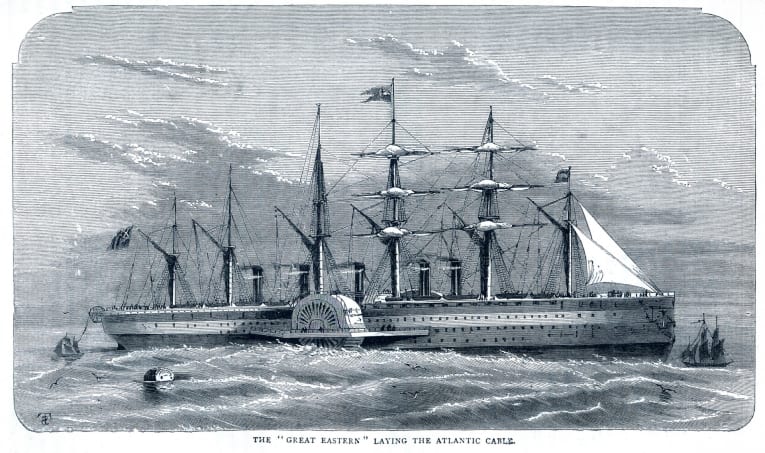
Small Group Tours for Senior Travellers.
Interested in joining Odyssey on a trip? With us you can visit the British Isles on the edge of the Atlantic, including Liverpool the historic port city of the Atlantic packet line ships. Plus, whereas we don’t offer ship tours, we do have tours with sections where we travel by railway, such as Mongolia and Russia by Train. We also have plenty of walking tours that you can join, as well as air tours of outback Australia.
Here at Odyssey Traveller we’re famous for our small groups, and we average eight participants per tour. Our maximum group size is eighteen people, which ensures quality, flexibility and care that is tailored to our clients. We specialise in small group tours for the senior traveller who is seeking adventure or is curious about the world we live in. Typically, our clients begin travelling with us from their mid 50’s onward. But be prepared to meet fellow travellers in their 80s and beyond! Both couples and solo travellers are very welcome on our tours.
Odyssey Traveller has been serving global travellers since 1983 with educational tours of the history, culture, and architecture of our destinations designed for mature and senior travellers. We specialise in offering small group tours partnering with a local tour guide at each destination to provide a relaxed and comfortable pace and atmosphere that sets us apart from larger tour groups. Tours consist of small groups of between 6 and 12 people and are cost inclusive of all entrances, tipping and majority of meals. For more information, click here, and head to this page to make a booking.
Articles about the Atlantic Ocean published by Odyssey Traveller
Related Tours
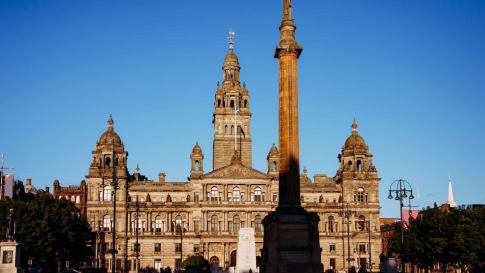
From A$13,915 AUD
View Tour
21 days
May, SepExplore the History, Culture & Wildlife of West Africa: Ghana, Togo & Benin
Visiting Benin, Ghana
This small group tour for couples and solo travelers concentrates on the history, culture and wildlife of coastal Central Africa. Meet the friendly local people and come to a greater understanding of just what has made them what they are today.
From A$14,995 AUD
View Tour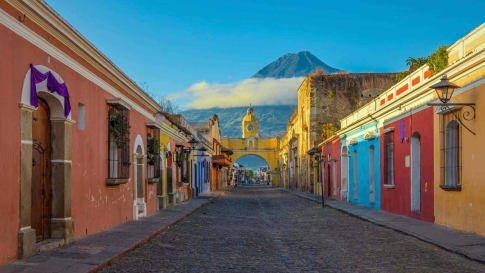
27 days
Oct, AprJourney through Central America: Panama, Costa Rica, Honduras, and Guatemala
Visiting Costa Rica, Guatemala
Join Odyssey Traveller as we go on a 27-day small group journey for mature and senior couples and solo travellers across Central America, exploring the history and diverse scenery of Panama, Costa Rica, Honduras, and Guatemala.
From A$22,855 AUD
View Tour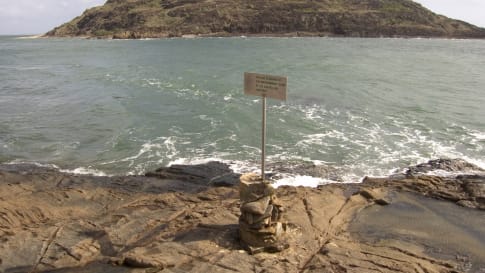
14 days
Oct, Jul, SepCape York and Torres Strait explored by air
Visiting New South Wales, Queensland
Escorted small group air tour of Torres strait islands, Cape York, Winton, Carnarvon Gorge. Learning about local culture and Aboriginal history.
From A$22,995 AUD
View Tour
days
Apr, May, Jul, Aug, Sep +2Central and Western Australia by Air
Visiting Northern Territory, Western Australia
Small group escorted air tour of Central and Western Australia, where the coaches have yet to reach. Outback Australia, Aboriginal art, Standing stones, Derby, Broome, Tanami desert, Kununurra explored for mature couples and single travelers.

14 days
Apr, Jul, SepKimberley and Pilbara explored by air
Visiting Northern Territory, Victoria
Small group air charter tour of the Kimberley and Pilbara for senior and mature couples and single travellers. Learn about Purnululu, Bradshaw art, visit Derby, Broome and Alice Springs.
From A$24,695 AUD
View Tour
8 days
Feb, Mar, Apr, NovFlinders and King island and Strahan air tour for seniors
Visiting Tasmania
King island and Flinders Island are discovered on this small group air tour for seniors and mature travellers that starts and finishes in Melbourne. The group also visits Strahan on the West coast of Tasmania
From A$10,995 AUD
View Tour
11 days
Oct, MayFrench History by Rail European small group short tour
Visiting France
Odyssey's small group tour offers travellers the unique opportunity to live for 10 days as a local Parisian in one of central arrondissements of Paris. The tour is based on tour is based on Ina Caro’s book of the same name, we stay in charming apartments as a base, and explore the city and surrounding areas using train and metro.
From A$10,500 AUD
View Tour
21 days
May, OctHistory of France by Rail | Escorted Small Group Tour for Seniors
Visiting France
French History by Rail small group tour is based on Ina Caro’s book of the same name. Participants live in central Paris, using apartments as a base, living as the locals do, whilst meeting each day as a small group to journey by rail and TGV to the beautiful medieval centres of France.
From A$17,595 AUD
View Tour
days
Apr, AugIrkutsk to Helsinki on the Trans-Siberian Railway
Visiting Finland, Russia
Escorted tour on the Trans-Siberian railway network from East to West starting in Irkutsk and finishing in Helsinki after 21 days. This is small group travel with like minded people and itineraries that maximise the travel experience of the 6 key destinations explored en-route. Our small group journeys are for mature couples and solo travellers.

22 days
OctKrasnoyarsk to Vladivostok on the Trans-Siberian Railway
Visiting Russia
Mature and solo travelers group Travel on the Trans-Siberian Railway for 22 days covering the second half of the Trans-Siberian journey, from Vladivostok to Krasnoyarsk to Vladivostok on the edge of Siberian Russia Small group journeys with a tour leader, explores 5 key cities with local guides providing authentic experiences in each with stops of 2-3 nights.
From A$12,650 AUD
View TourRelated Articles
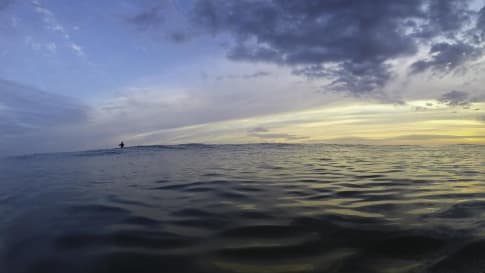
Atlantic Ocean and How it Shaped Ancient Communities In Europe
Article of interest for senior couples and mature solo travellers joining a small group European tour to Faroe Islands, Scottish Isles, Morocco or Portugal. Focus is on the early exploration of the Atlantic.

Hanseatic League
An Article on the early trading of Germany and the Baltic states by an Antipodean travel company serving World Travellers since 1983 with small group educational tours for senior couples and mature solo travellers who are curious.
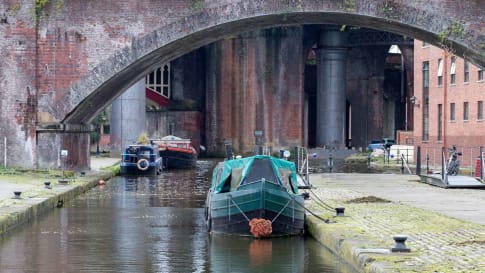
Britain: First Industrial Nation
Britain: The First Industrial Nation In the mid-18th century, the Industrial Revolution was largely confined to Britain. Historians and economists continue to debate what it was that sparked the urbanisation and industrialisation that would change…
England's Liverpool: Port City, Architecture Marvel
Article for educational small group tours about the Port City of Liverpool. An Architecture Marvel from Georgian times, built on trade, some good, some horrific. Read and learn more before joining a tour for senior couples and mature solo travellers interested in culture, learning and the arts.




